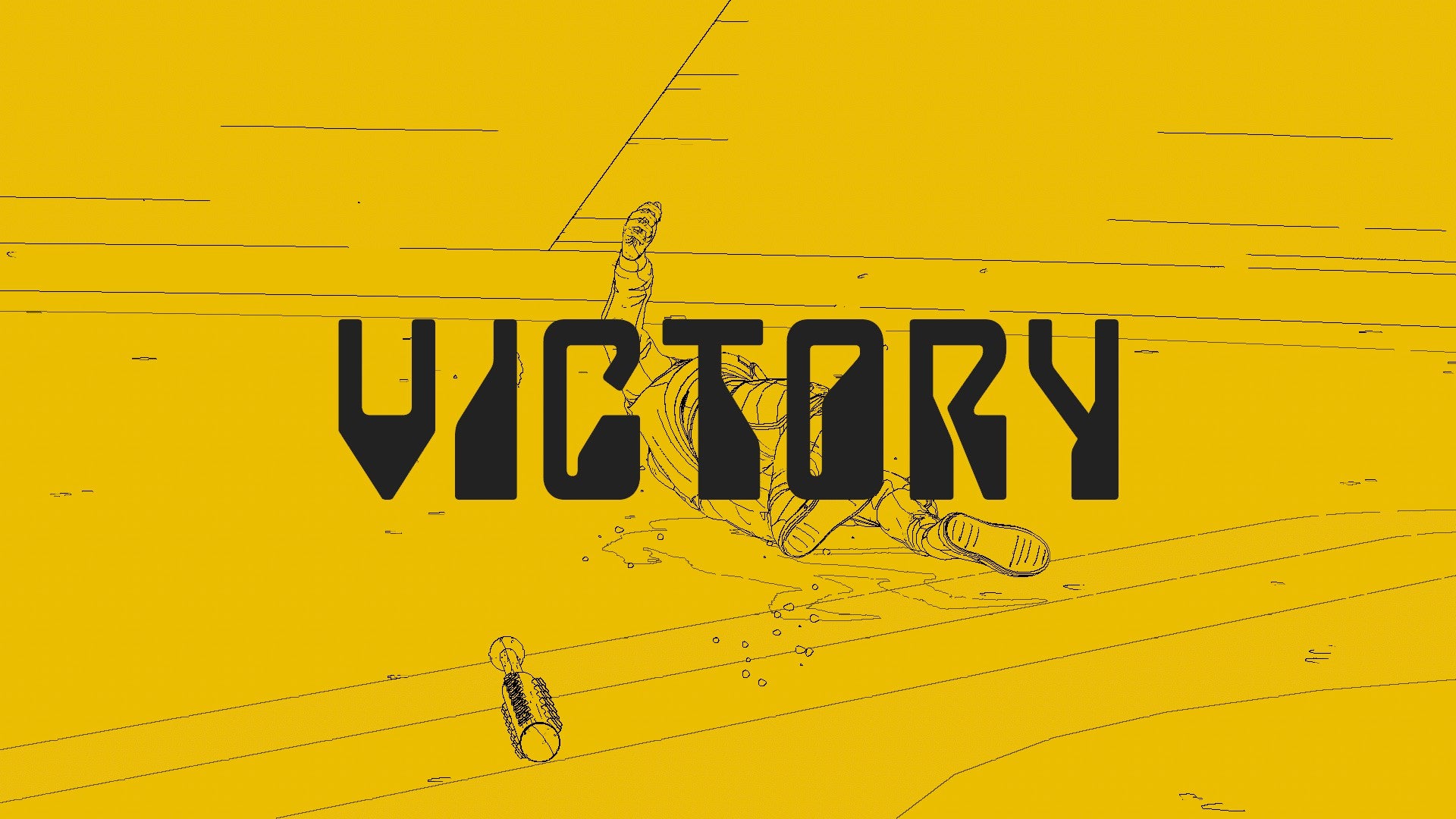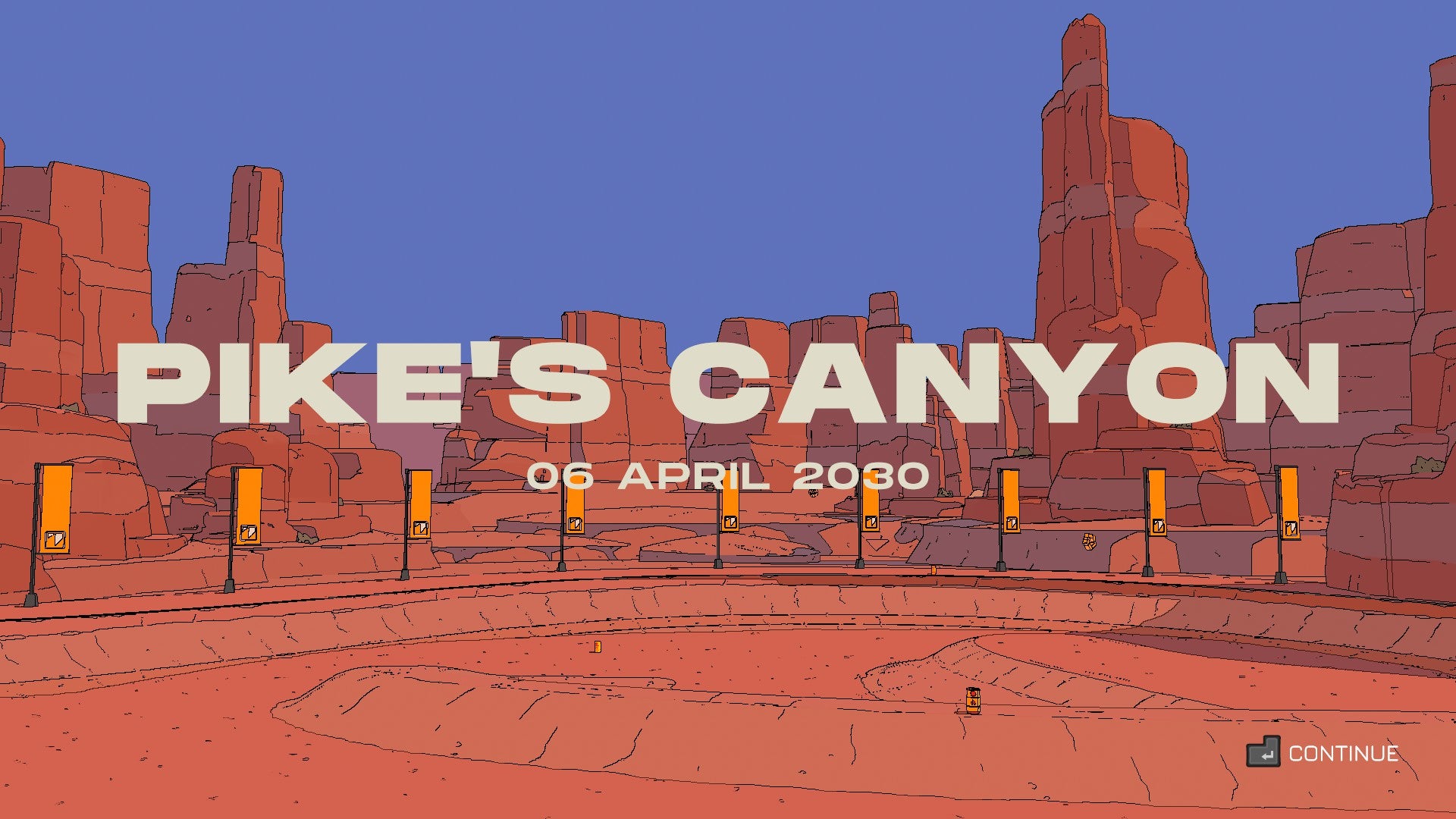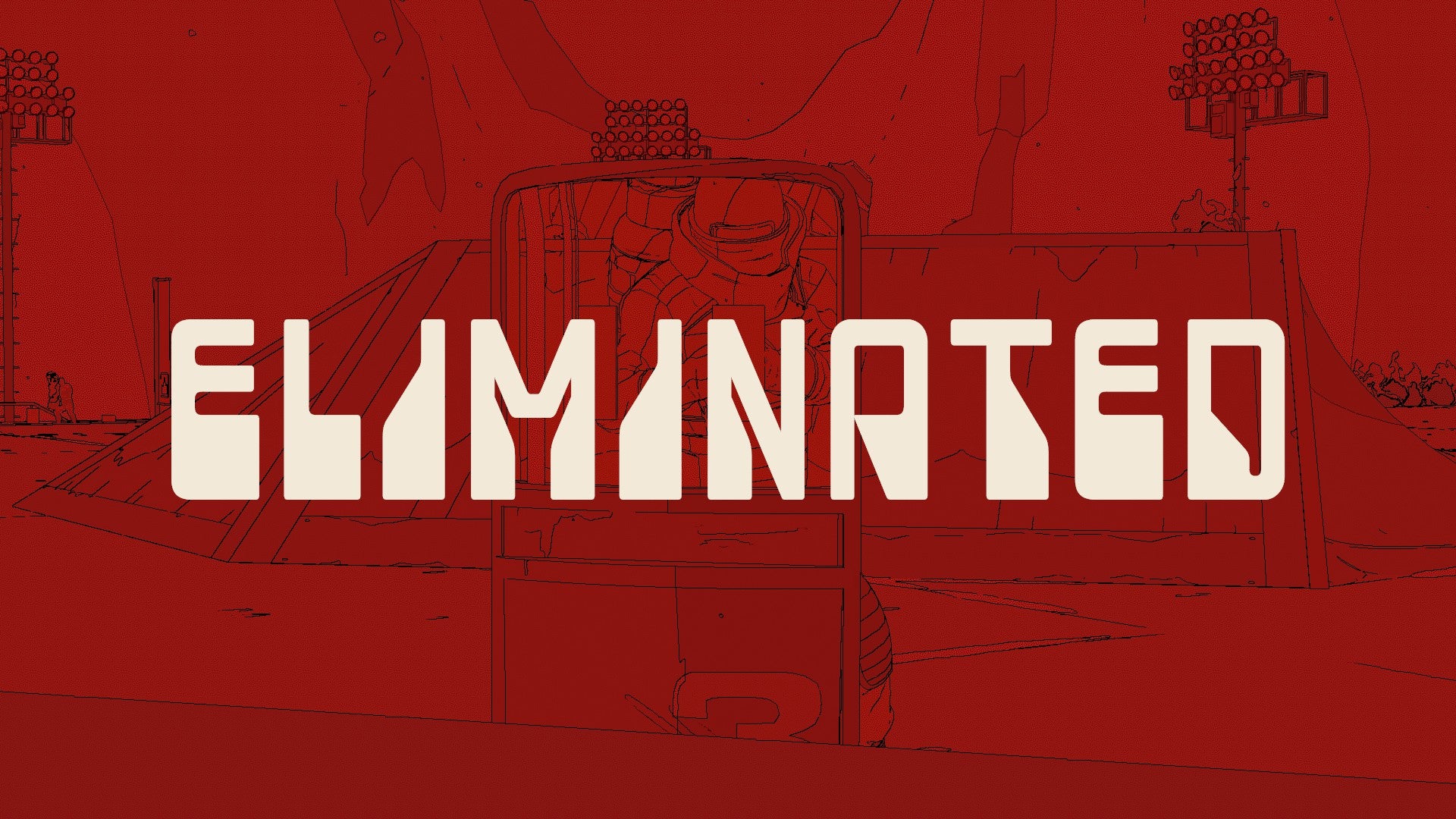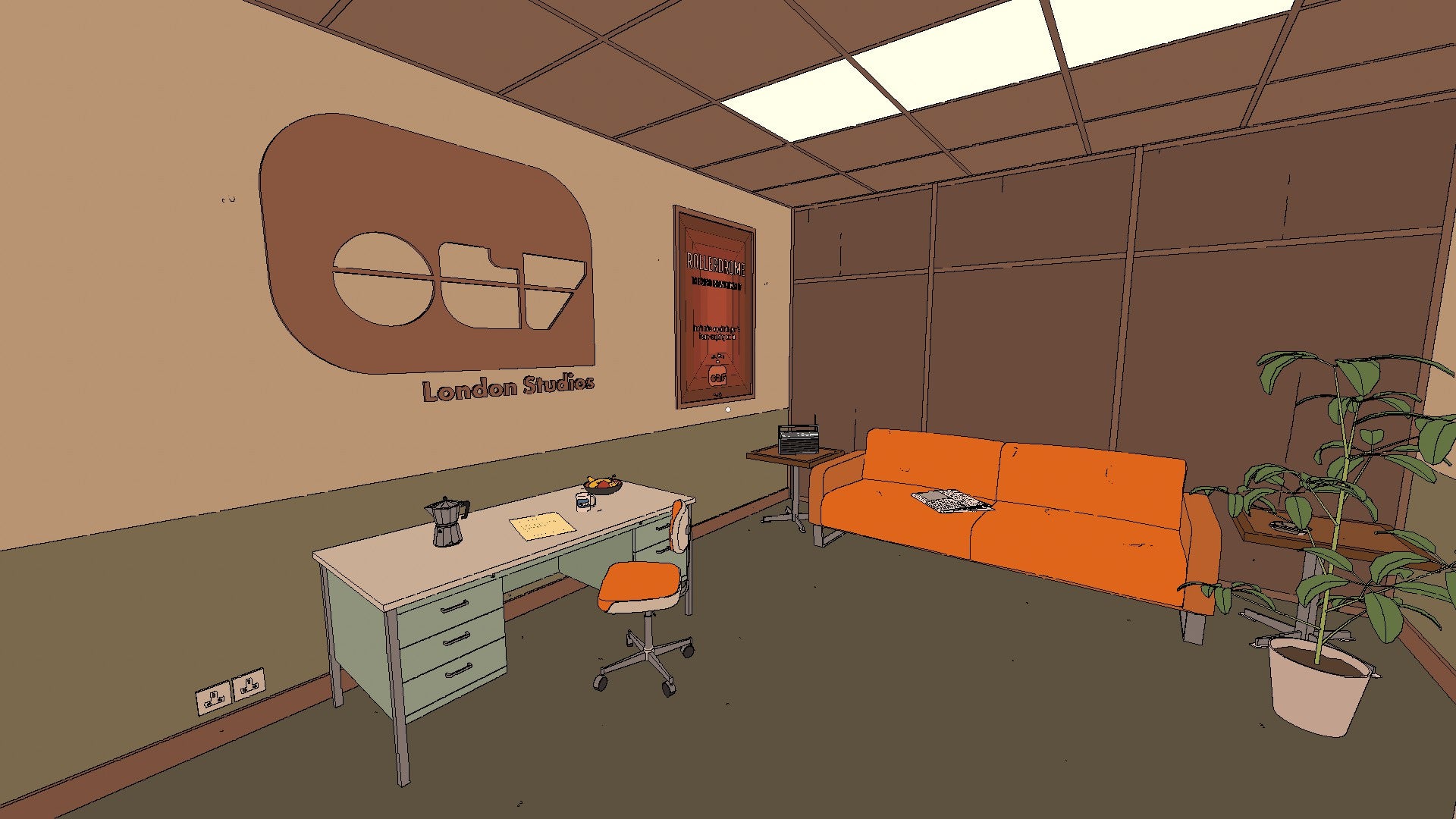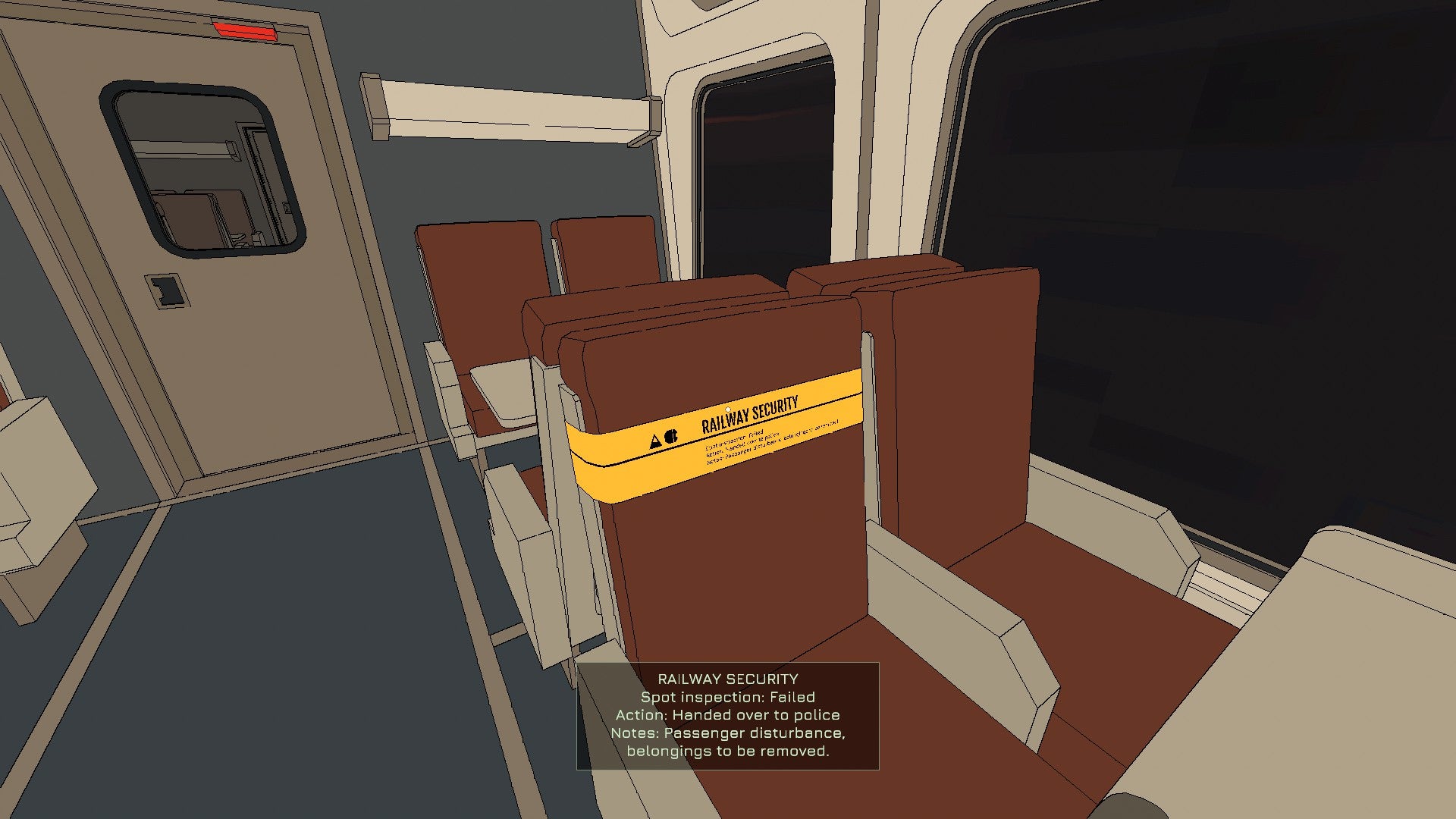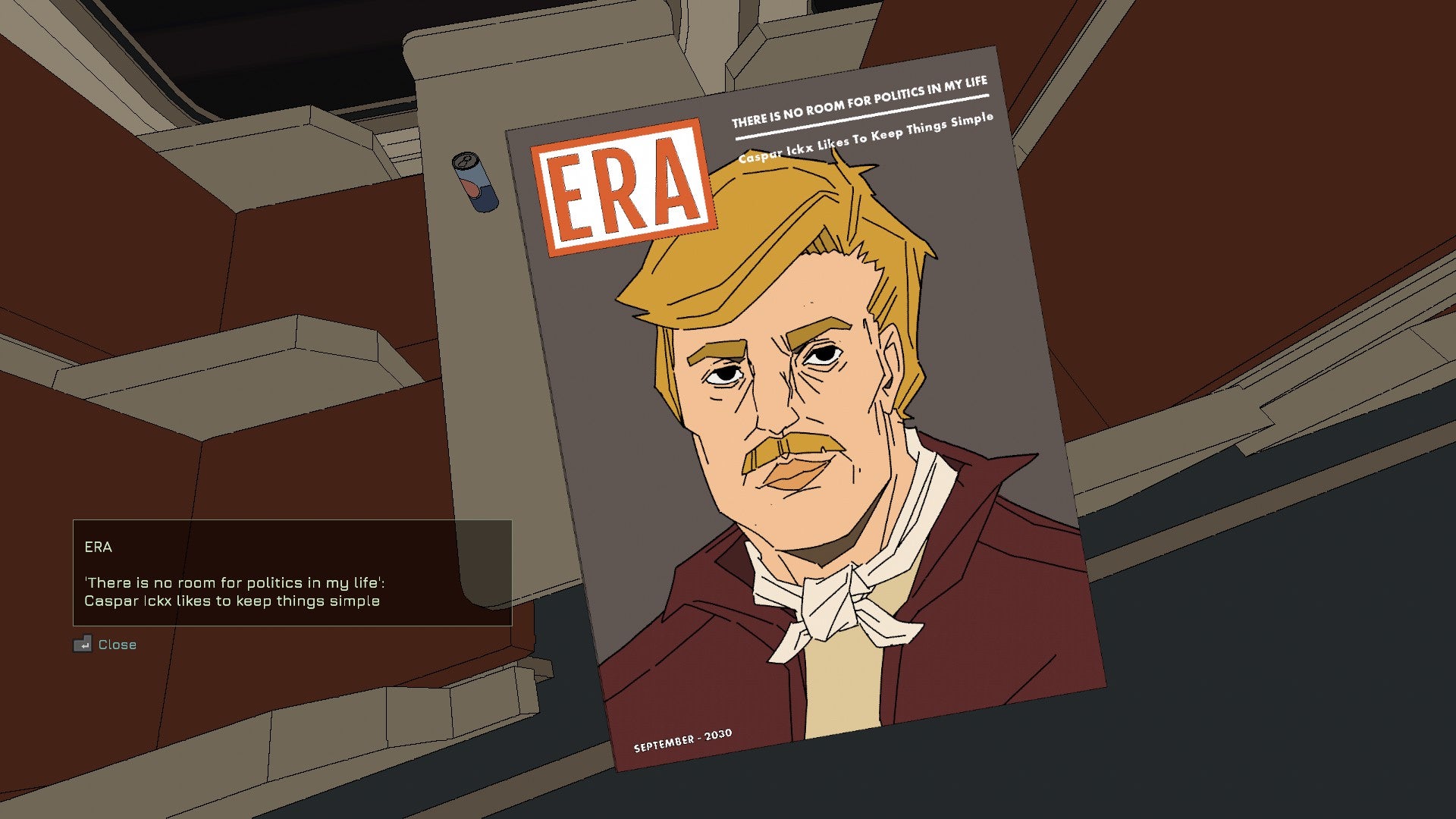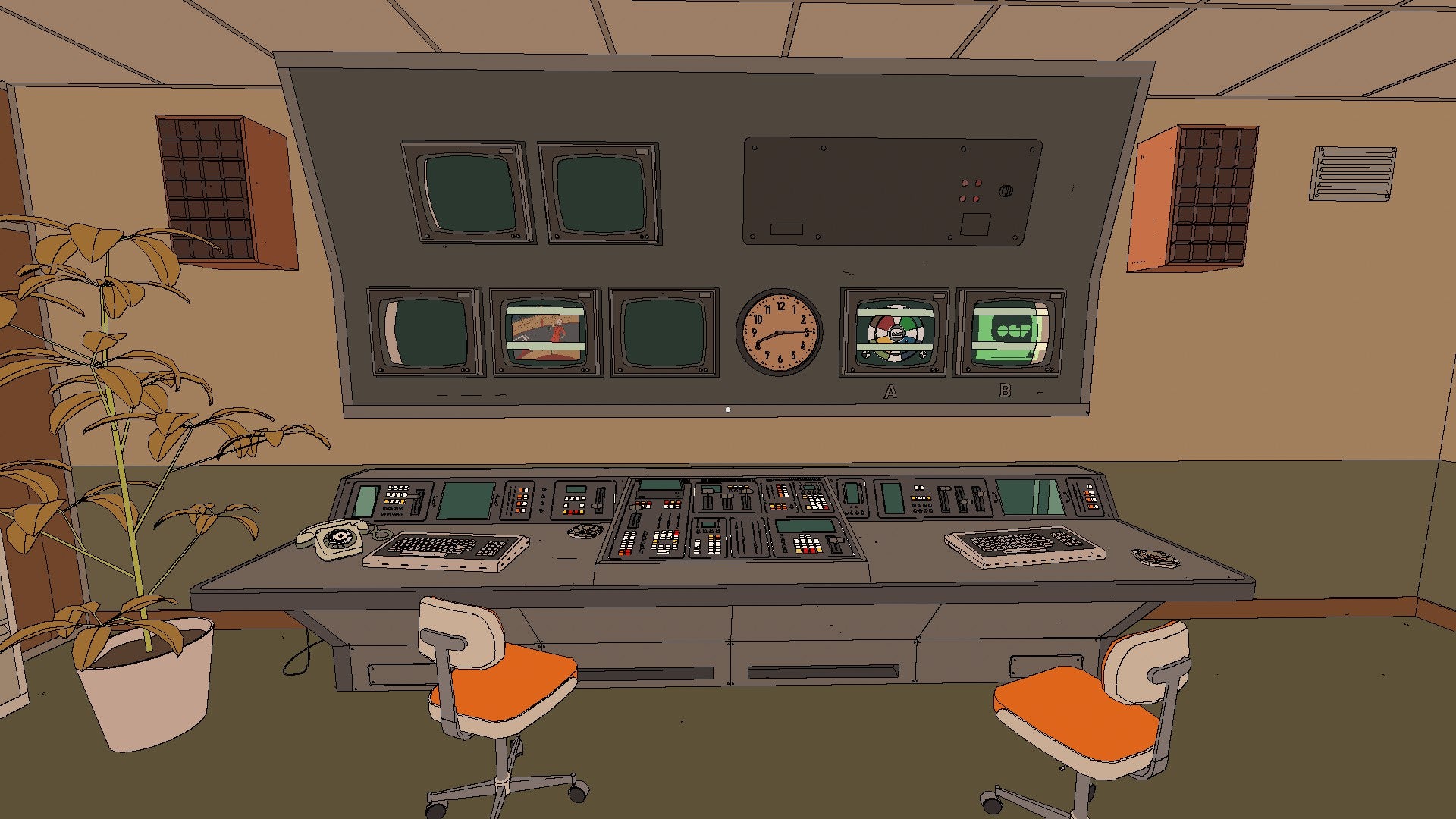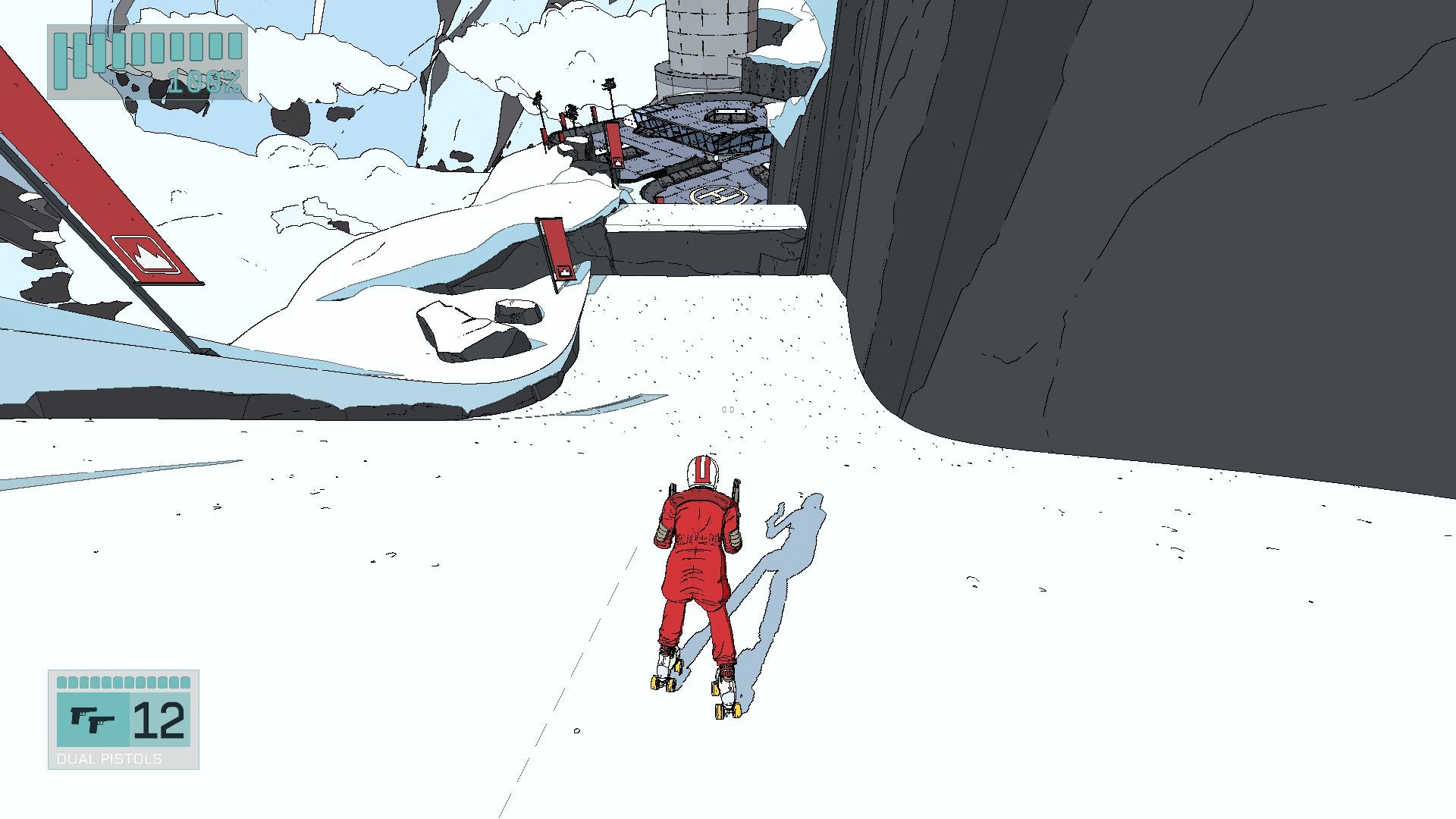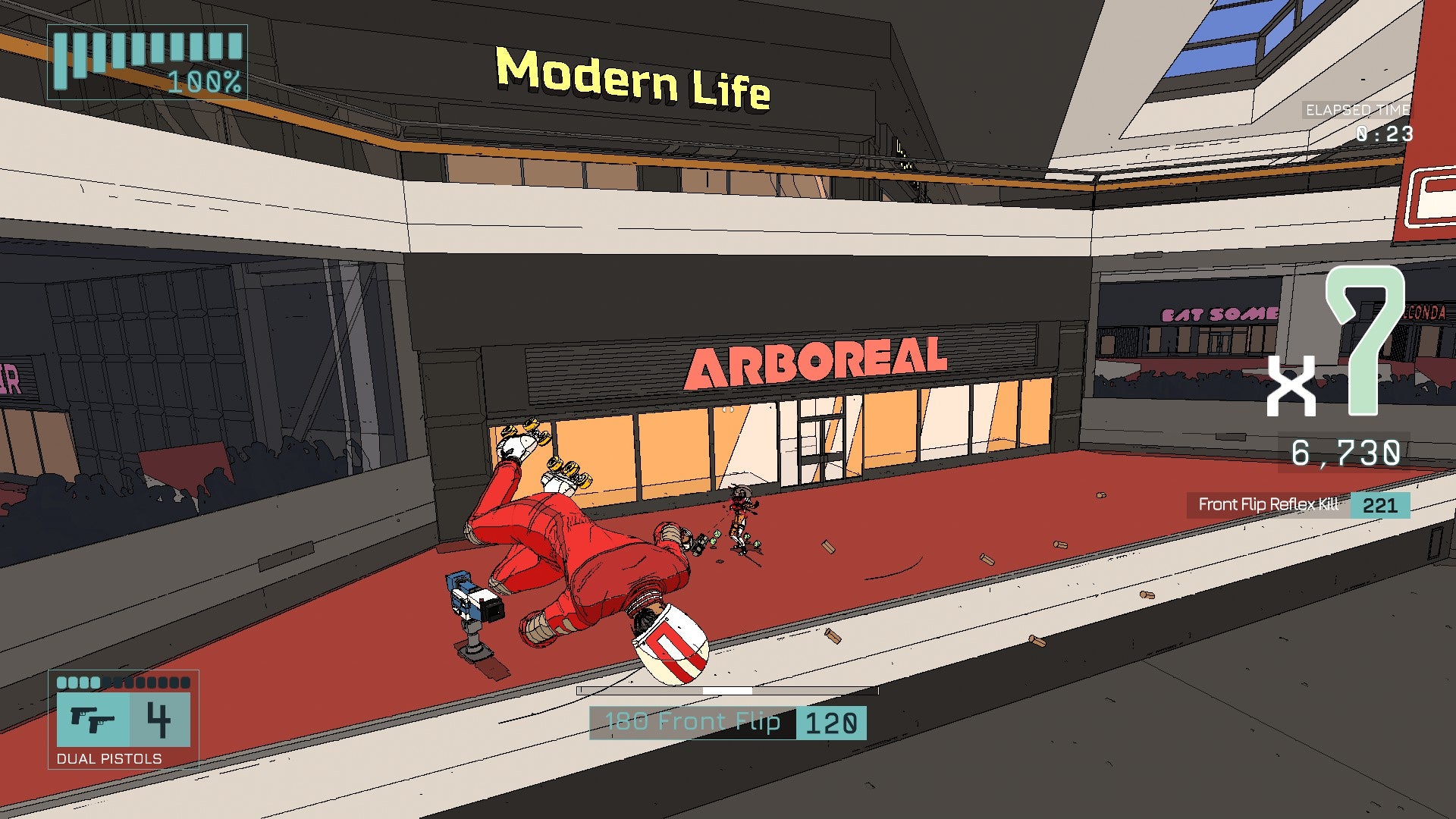Mark me down as a square, though, because I am pretty terrible at Rollerdrome, despite its efforts to convince me otherwise. Your job, as debutant Kara Hassan, the rookie outsider in a niche bloodsport that’s taking off in the worryingly not-distant 2030, is to sweep through the tournament and put a villainous rival in their place. There’s some nice framing here. Between stages Rollerdrome morphs into a miniature narrative game. You’ll have a little moment here and there to wander around a small area - a changing room, a radio station, etc. - poking and pulling at the threads of an overarching story. It’s simple, albeit not subtle: in a near-future, Britain-like place, corruption seeps in alongside privatisation, a brief, enjoyably gallows-humoured allegory that ties in nicely with your objective of winning this grim tournament but, more importantly, adds the spiky bite of antifacsism to a game that’s already bristling with style. The style is, ultimately, everything in Rollerdrome. At times it feels like a kind of playable coffee-table magazine, doused in wonderful, full-screen splashes of colour on victory and death - colours, like a tangy, mustardy yolk and rich, blood-orange red, that you know a designer has tinkered with for hours to get just so - animated in immaculate, Moebius-style comic book art, Hassan clothed in an Eddie-the-Eagle one piece and a retro moped helmet with twin stripes. I feel like I’ve seen Rollerdrome before - somewhere just off Carnaby Street, probably, sandwiched between a graphic design company and a boutique for ’70s mods. I mean that in the kindest possible way, though. Rollerdrome is outrageously attractive. A level above - and it merges spectacularly with how you actually play it. Roll7’s goal - as the studio has explicitly stated before - is to get you into a flow state with its games, a delight in OlliOlli that’s evolved into a mode of magic murder-zen in Rollerdrome. You have four weapons here, starting with just a pair of dual pistols before branching out as you progress into a shotgun, a grenade launcher and a sumptuous kind of long-range laser-crossbow that bounces bolts off walls. They’re an example of Rollerdrome’s often impeccable design. Each of them, for instance, is built around timing - or not timing so much as rhythm. Aiming is, cleverly, automatic, using a lock-on system that targets whatever enemy is closest to your reticle and in range, while the left trigger slows down time and brings the rhythm elements of weapons into play. The shotgun, for instance, does extra damage when you time your shots to a narrow window, like the old ‘active reload’ of Gears of War but you’re active killing instead. The crossbow charges up to one of two levels. The dual pistols, meanwhile, seem to rattle off slugs a little faster when you’re manually hammering the trigger rather than holding it. These loop together with a beautifully simple ammo and health system, borrowed from the likes of 2016’s Doom and plenty before it. Killing enemies gets them to drop candy green shards of health, while performing tricks reloads your very limited, single-clip ammo. You can see the flow state already, but Rollerdrome layers this with some simple, but deftly handled enemies: simple melee grunts with batons, shielded riot police you’ll need to stagger, mechs to target strategically, various grenades and mines to dodge - and an active dodge, too, that quickly becomes essential. Snipers of more than one kind will lock onto you with a beam of crimson red before it briefly flashes white, giving you a window to not only shake their focus with a dodge but get a little damage boost if you immediately snap into a slow-motion zoom. Quickly, you’ll hit that zone of expertise (a stretch to call it that when talking about my own play here, but bear with me) where these types of combo survival challenge games elevate themselves: the moments where enemies cease to become obstacles and morph into opportunity. Grunts are free health when surrounded by tougher mechs and late-game snipers. The mines fired out from a defeated riot cop are a free attack for you to dodge - if you trust yourself - to prepare a more powerful shot from, say, that thunderbolt sniper that can, now, kill a certain enemy in one shot. Throw in another layer for good measure - a big and brilliant one, the entire skating game this battle is built on. Grunts aren’t just free health, they’re a free hit to keep your combo topped up safely when it’s fading away. Predictable attacks - they’re all predictable to you, soon enough - are opportunities not just to dodge for more damage, but to speed up your kills on slower, more heavily-armoured foes that let you clear the stage faster, hitting a higher score. You’ll need to not only rack up those points, but also clear up to ten objectives per stage if you ultimately want to advance Rollerdrome’s campaign. You’ll want to do it regardless of the campaign though, really. It’s only short - there are four levels, from a kind of deadly Olympic Velodrome with half pipes to Sable’s desert bowls, a weirdly dystopian shopping mall and a glorious Bond villain ski resort - with about three variations to each. But you could, and I will, play these stages infinitely. I am not one for leaderboards, but I am one for fun. And good grief, what fun. Few games sing for you like this. Few systems compliment and combine so elegantly and relentlessly, with such small and simple moments of care for everything in it, from the little blipping noises for reloading and picking up health (straight out of Grand Theft Auto - Rollerdrome’s full of ultimate video game sounds) to the booming pistols of Lara Croft. And no game has ever been so cool.

